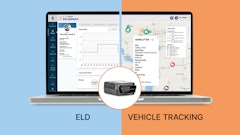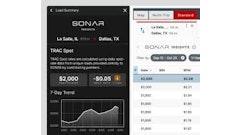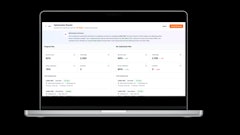
Shipping bid season is upon us as shippers look to add certainty and flexibility to their operations. Often, this means leveraging broker agreements to add scalable trucking capacity.
However, much of the brokerage industry is commoditized, which makes it nearly impossible for pricing to be the sole point of differentiation for companies with goods to move. If every quote is essentially the same (give or take a few dollars), finding additional value from broker relationships becomes critical.
Fortunately, there’s no shortage of value-added opportunities that brokerages and carriers can bring to their customer relationships, as long as a shipper knows the right questions to ask in their discussions, and ultimately, in the RFI/RFPs.
How do you ensure carriers covering loads from you know what to do?
The days of job envelopes are over; digital communications like email and SMS have replaced paper copies. However, they’ve also eliminated personal contact and the informal Q&A/tips that can come with a load.
This often means confusion or friction at a receiver’s location. Many warehouses or distribution centers have particular requirements for trucking companies to follow, such as appointment requirements. Receiver operations and efficiency have become paramount over the last few years. Many warehouses are working to align their staff to be ready when a truck arrives (and not a moment before or after), maximizing the time their employees are productive. This can even mean dynamic scheduling of lunch times, recognizing an expected lull in activity, and shifting breaks to match the lull.
Of course, it isn’t just appointments. Sometimes, experienced truckers will notice a trend at a receiver’s facility (or the surrounding area). Sunrise and sunset can decrease visibility at specific times of the day, increasing traffic and making it harder for a truck to get in and out quickly.
It may sound neurotic, but sharing information about weather and appointment systems can be great for shippers and truckers. For truckers, a little training often means less time waiting to be unloaded and less time idling. This can mean more time to run loads and, ultimately, more income. For shippers, the decreased wait time eliminates the risk of unexpected accessories like detention and reduces emissions (trucks aren’t idling).
While communicating with a driver is easier than ever, thanks to smartphones, a tremendous amount of institutional knowledge and specificity is often being lost in the handoff between brokers and carriers.
What percentage of your carrier base has taken a load from you in the last 30 days?
For the last few years, there’s been an arms race among brokers to show that they have the biggest pool of available capacity. Some brokers highlight the total number of trucks they can access, while others share the number of motor carriers they’ve approved to take loads.
At its best, this is an issue of marketing teams trying their best to position a company as “ready for anything you can throw at it.” After all, a company with access to 25,000 trucks will surely be able to cover the loads a customer sends. At its worst, however, this can be an admission that the broker lacks deep relationships with carriers; there’s a vast difference between knowing of a carrier vs. working with a carrier.
Trusted relationships go a long way in preventing shippers from being victimized by freight theft or fraud, and understanding the percentage of carriers that have ongoing engagements with a broker can help a shipper discern their risks.
What’s your average time to pay carriers in your network?
Time-to-cash is one of the most significant hurdles in transportation. Carriers pay upfront costs like fuel and labor and then wait for payment for services. At the same time, many brokers will delay payments. This can be for several reasons, many of which can be valid.
For instance, many shippers negotiate lengthy payment terms with brokers; “net 90” is quite common as a billing term.
However, some brokers use the billing terms they’ve accepted as an excuse for holding off payment to carriers, even if their website says something far different (i.e., next day or even same day).
This time lapse between job completion and payout impacts the relationship between carriers and brokers, forcing many carriers to evaluate time-to-pay as the most critical metric, even over the amount of pay.
For a shipper looking to establish a new broker relationship, this question (especially when compared to what the broker has publicly promised) can go a long way toward understanding the dynamics of a broker/carrier relationship, which has an obvious impact on the quality of work performed for a shipper.
What are you doing to help us along our sustainability journey?
A slew of regulations at the state and federal level will soon require enterprises to disclose their carbon and/or reduce their emissions. The SEC will soon include emissions reporting in financial statements, meaning CFOs can be held legally responsible for accurate reporting (and jail time could be a penalty). In California, Indirect Sourcing Rules (ISRs) will demand disclosures from companies with more than $1 billion in revenues.
In addition, many of the most beloved brands are taking steps to reduce their emissions. Brokers should be able to support companies in their journey to sustainability. Decision-makers simply need to ask the right questions.



















